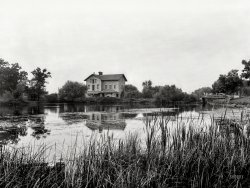
MAY CONTAIN NUTS

Search Shorpy
SHORPY ART

Framed or unframed, desk size to sofa size, printed by us in Arizona and Alabama since 2007. Explore now.
Join and Share
Ad-Free Shorpy
Shorpy is funded by you. Patreon contributors get an ad-free experience.
Learn more.

Recent comments
- Freeze Frame
- Texas Flyer wanted
- Just a Year Too Soon
- WWII -- Replacing men with women at the railroad crossing.
- Yes, Icing
- You kids drive me nuts!
- NOT An Easy Job
- I wonder
- Just add window boxes
- Icing Platform?
- Indiana Harbor Belt abides
- Freezing haze
- Corrections (for those who care)
- C&NW at Nelson
- Fallen Flags
- A dangerous job made worse
- Water Stop
- Passenger trains have right of way over freights?
- Coal
- Never ceases to amaze me.
- Still chuggin' (in model form)
- Great shot
- Westerly Breeze
- For the men, a trapeze
- Tickled
- Sense of loneliness ...
- 2 cents
- Charm City
- What an Outrage
- Brighton Park
Member Photos
The Shorpy
Print Emporium
Print Emporium
Search Shorpy
Search results -- 30 results per page
- Park Terminal: 1943
- ... Illinois Railway Museum, Union, Il, about 50 miles NW of Chicago. It's the largest railway museum in the US and, April through November, ... Posted by Dave - 11/01/2013 - 8:47am -
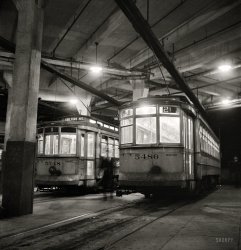
- Urban River: 1905
- ... Circa 1905. "Twelfth Street bascule bridge over the Chicago River." 8x10 inch dry plate glass negative, Detroit Publishing Company. ... had a unique feature that shows up pretty well in this old Chicago photo. Viewed "full size", a little horizontal slot is visible in the ... Posted by Dave - 11/05/2018 - 1:59pm -
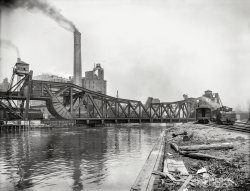
- The Invisible Hand: 1942
- ... full size.
The Paper Pail On Nov. 13, 1894, in Chicago, the inventor Frederick Weeks Wilcox patented a version of what he ... Posted by Dave - 02/11/2017 - 8:26am -
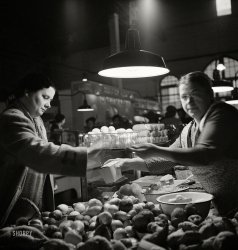
- Redlands Oranges: 1943
- ... transparency by Jack Delano, taken during his trip from Chicago to California on a Santa Fe freight train.
Drying? Why do ... Posted by Dave - 02/02/2008 - 12:54pm -
![Redlands Oranges: 1943 March 1943. Drying oranges at a co-op packing plant in Redlands, California. View full size. 4x5 Kodachrome transparency by Jack Delano, taken during his trip from Chicago to California on a Santa Fe freight train.
Drying?Why do oranges need to be dried?
[Because they're wet from being washed. - Dave]
Sentimental!!!I live in the vicinity of Redlands and surely do miss the big orange crops. Most of the groves are gone and were replaced with residential developments.
(The Gallery, Kodachromes, Agriculture, Jack Delano)](https://www.shorpy.com/files/images/1a34769u.thumbnail.jpg)
- Sluggo: 1911
- ... in 1882 as Oscar Nielsen, Battling Nelson grew up in Chicago and began his professional career at the age of 14 with a first round ... Freddie Welsh. He went on to work for the post office in Chicago. Nelson died at the age of 71 in 1954, according to some reports after ... Posted by Dave - 06/03/2014 - 9:01am -
![Sluggo: 1911 New York, 1911. Battling "Bat" Nelson (left) and sparring partner, our fourth look at the scrappy lightweight boxing champ. Bain News Service. View full size.
Layered lookA grateful nation notes that should Bat's trunks head south, public decency will remain unoffended.
[Also a good example of what happens when you let the gardener cut your hair. - Dave]
A tougher name than "Oscar"Born in Denmark in 1882 as Oscar Nielsen, Battling Nelson grew up in Chicago and began his professional career at the age of 14 with a first round knockout of Wallace Kid. It was Kid's professional debut too, and for that matter his only professional fight.
He won the lightweight title in 1905, defeating champion Jimmy Britt by knockout in the 18th round of a scheduled 20-round fight. A year later, however, in an outdoor fight held before a huge crowd in Nevada, Nelson lost the title to Joe Gans by disqualification. Far behind on the scorecards, a desperate Nelson landed a very hard blow in the 42nd round, unfortunately for him it was below the belt. Boxers in those days routinely spent round after round maneuvering for position while throwing very few punches, so the idea of a fight going 40 or more rounds is not as absurd as it may seem.
Nelson got a second chance against Gans, and regained the title in 1908 by knockout in the 17th round of a fight scheduled for 45. He defended the title several times, including yet another rematch with Gans, before losing it to Ad Wolgast in 1910. Nelson's defeat came via TKO in the 40th round of a scheduled 45-rounder. Some boxing historians say it was one of the most brutal title fights of all time.
Nelson retired from boxing in 1917, after losing by decision in an attempt to regain the lightweight championship from Freddie Welsh. He went on to work for the post office in Chicago. Nelson died at the age of 71 in 1954, according to some reports after suffering a head injury in a street attack.
Nelson's record as a professional was 59 wins (40 by knockout), 19 losses (three by KO), and 22 draws. He also had a record of 10-14-5 in so-called "newspaper decisions." These are fights for which there are no reliable records, official recordkeeping having been rather haphazard in those days, and therefore are known only from contemporary news reports. One record of Nelson's that is known, and which has been tied but never beaten, occurred when he knocked out William Rossler 12 seconds into a 1902 fight. As the 12 seconds include the referee's 10-count, Nelson landed the knockout punch a mere two seconds after the bell starting the fight.
(The Gallery, G.G. Bain, Sports)](https://www.shorpy.com/files/images/SHORPY-01715u.thumbnail.jpg)
- Mme. Alda: 1909
- ... Japanese importers at the many world's fairs between 1893 (Chicago) and 1915 (San Francisco and San Diego).
The San Diego Museum of ... Posted by Dave - 08/09/2012 - 11:43am -
![Mme. Alda: 1909 "Alda relaxing at home." The soprano Frances Alda in 1909, a year before she married Metropolitan Opera manager Giulio Gatti-Casazza. She was said to have "a temper as red as her hair." George Grantham Bain Collection. View full size.
Stunning KimonoThis appears to be ceremonial kimono, probably for a wedding. Oh, to have color! Very fashionable in this period but rarely so ornate (or nearly as expensive). Any experts out there who can tell us more?
[Used as a dressing gown, it would be for ceremonial lounging. - Dave]
Kyoto Silk KimonoThe beautifully embroidered peacock-in-a-garden kimono resembles Japanese wedding kimonos in its luxury, but was probably made specifically for export. During the late Meiji Period (1890s to 1912) much of this high-end embroidery, as well as silk tapestry panels with similar garden scenes, was made in Kyoto to supply the Western demand for beautiful "Oriental" textiles. Pictorial arrangements of exotic birds and flowers like that on Mme. Alda's kimono were derived by the Kyoto designers from 18th Century Chinese scroll paintings. Many of these robes and textiles were sold by Japanese importers at the many world's fairs between 1893 (Chicago) and 1915 (San Francisco and San Diego).
The San Diego Museum of Art has in its collection a very similar "peacock" kimono that was presented in 1910 as a state gift to the wife of an American diplomat. Unlike Mme. Alda's kimono, which is of white satin, the SDMA example was embroidered on pink creped silk, and definitely was used by the diplomat's wife as an "At Home" lounging robe in social rituals such as receiving her female friends for afternoon tea.
(The Gallery, Dogs, G.G. Bain, Portraits)](https://www.shorpy.com/files/images/01670u.thumbnail.jpg)
- Night Freight: 1943
- ... operations on the Indiana Harbor Belt railroad between Chicago and Hammond, Indiana. At 8:45 p.m. the train arrives at its ... Posted by Dave - 08/29/2016 - 8:49pm -
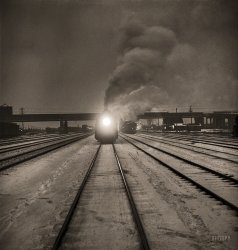
- Learning to Ride: c.1956
- Chicago, IL, circa 1956 - a very hot summer. This is a photo of me (on the ... Rackauskas). My name is Janine. My parents immigrated to Chicago, separately, after WWII, met while working at the Hart, Schaffner and ... factory and married. We lived on the south side of Chicago, near St. Bernar's parish (near 67th and Bishop Street). View full ... Posted by jk4493 - 08/15/2013 - 7:59am -
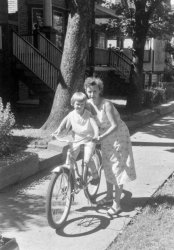
- Future Farmer: 1939
- ... his three daughters, Nancy Smith and Jean Nielsen, both of Chicago, and Kerry Funke of Norwalk; five grandchildren; and two sisters, ... Posted by Dave - 12/24/2017 - 10:43am -
![Future Farmer: 1939 September 1939. "Bud Kimberley, a future farmer of America, driving a tractor. Jasper County, Iowa." The brother of Margaret, seen here yesterday. Photo by Arthur Rothstein for the Farm Security Administration. View full size.
No Comments Yet?Don't tell me I'm the first to comment about a young Paul Newman driving that tractor?
Keeping up with the KimberleysMargaret Lou's two brothers, James and Howard, outlasted World War II. Generations of the extended Kimberley family included owners of at least six farmsteads in northwestern Jasper County and southeastern Story County, small-town bankers, county and state agricultural agents, and many others. According to a 2016 Des Moines Register story, Kimberley Farms Co. now owns or rents over 4,000 acres in Jasper, Story and Polk Counties. One of its farms has been visited twice by Chinese President Xi Jinping, who announced plans to use it as the model for a demonstration farm in Hebei province.
James Bud Kimberley 1922-1993December 25, 1922 to Feb. 3, 1993.
James Bud Kimberley of Collins, Iowa, died age 70 of a heart attack at his home in rural Collins.
He was born to John B. and Carrie (Dunlap) Kimberley at Collins. He was a lifelong resident in the Collins area, graduating from Collins High School and attending Iowa State University for one year. He married Alta Harris on Nov. 21, 1942, at the Little Brown Church at Nashua. He was a self-employed as a farmer. He was a member of the Collins United Methodist Church and was a Mason.
Survivors include his wife, Alta, of Collins: his three daughters, Nancy Smith and Jean Nielsen, both of Chicago, and Kerry Funke of Norwalk; five grandchildren; and two sisters, Margaret Fisher of Twin Lakes and Blanche Bodie of Knoxville.
A-C WCThere isn't much shown of the tractor Bud is driving - so I had to do some digging.
It appears to be an Allis Chalmers WC series tractor. The stamped end of the fuel tank makes this an earlier model; later versions of the tractor had rounded tanks.
[Below, more of Bud and his tractor. - Dave]
(The Gallery, Agriculture, Arthur Rothstein)](https://www.shorpy.com/files/images/SHORPY-8b18317a.thumbnail.jpg)
- The Night Porter: 1942
- ... the men's washroom aboard the 'Capitol Limited' bound for Chicago." Acetate negative by Jack Delano. View full size.
Sam McGee ... Posted by Dave - 03/18/2020 - 12:32am -
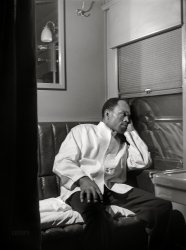
- Industrial Omaha: 1938
- ...
Okay, here's your train geek comment She's a Chicago & North Western class E 4-6-2, built in Schenectady by ALCO in ... Posted by Dave - 06/08/2019 - 4:02pm -
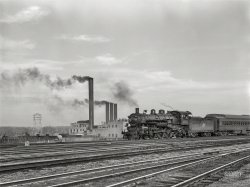
- From the Elevated: 1900
- "From the Elivated [sic]", Chicago, 1900. From "Sam Hyde's Photography Travelogue Adventures," 1898-1904.
In early Chicago city planning, subways were too expensive to consider and elevated ... right choice. On June 6, 1892, the first elevated line in Chicago opened, running from Congress Parkway and State Street to 39th Street, ... Posted by Christoph Traugott - 02/28/2019 - 5:15pm -
![From the Elevated: 1900 "From the Elivated [sic]", Chicago, 1900. From "Sam Hyde's Photography Travelogue Adventures," 1898-1904.
In early Chicago city planning, subways were too expensive to consider and elevated tracks appeared to be the right choice. On June 6, 1892, the first elevated line in Chicago opened, running from Congress Parkway and State Street to 39th Street, along the alley, behind and around buildings, its route was completely through city-owned alleys. Earning it the nickname "Alley 'L'." This was done to circumvent the difficulty of obtaining consent signatures from the property owners along the streets, something required by the Cities and Villages Act of 1872.
Photo taken by Samuel Peake Hyde, b. Feb 17, 1850, St. Francisville, Clark, Missouri; d. April 28, 1921, Belleville, St. Clair, Illinois., son of Edwin C. Hyde and Elizabeth Hyde. Samuel was a clerk for J. G. Green Company, 1867, and then worked with his father at E.C. Hyde & Co., Storage and Commission, 4 South Commercial Street, Belleville, IL. Sam resided at 37 North Douglas, Belleville, Illinois.
(ShorpyBlog, Member Gallery)](https://www.shorpy.com/files/images/Sam_Hyde_Page_54_2.thumbnail.jpg)
- Doubleday & Co.: 1948
- ... According to a May 26, 1946 article in The Chicago Tribune, the Hanover plant "will be used to print and bind the reprint ... Posted by Dave - 12/12/2016 - 8:45pm -
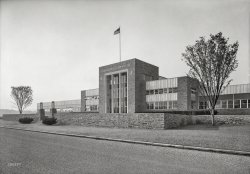
- Number Please: 1917
- ... My dad was an employee at the Western Electric works in Chicago (drawing cable) when he entered service in WWII in the USAAF. So this ... Posted by Dave - 07/08/2008 - 11:29pm -
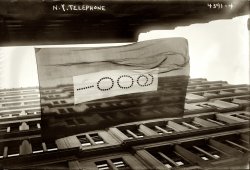
- Christmas Morning, 1958
- ... at my great-grandparents' house on North Pulaski in Chicago. He was close to retirement as a sergeant with the Chicago Police Department when this was taken. He passed on prior to my memory, ... Posted by kmerkel - 12/28/2015 - 9:03pm -
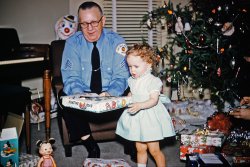
- Al and Jimmy: 1913
- Al Bridwell and Jimmy Archer of the Chicago Cubs. July 21, 1913. View full size. 5x7 glass negative. George ... Posted by Dave - 12/10/2007 - 4:52pm -
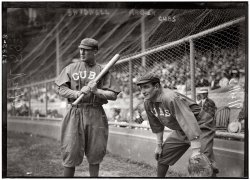
- Vertigo: 1935
- ... taken photos and work measurements from the rooftop of Chicago's Trump tower at 1800 feet above the street. This is far scarier than ... Posted by Dave - 11/10/2014 - 9:55am -
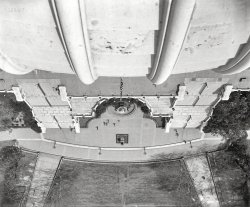
- Chapel Hill (Colorized): 1939
- ... Granger Pipe Tobacco poster on the wall is for sale on a Chicago based web site - Granger Pipe Tobacco Advertising Piece with Johnny ... Posted by DonW - 07/18/2011 - 10:33pm -
![Chapel Hill (Colorized): 1939 The same Granger Pipe Tobacco poster on the wall is for sale on a Chicago based web site - Granger Pipe Tobacco Advertising Piece with Johnny Mize, St. Louis Cardinals. Autographed. Circa 1940's. $2000. View full size.
Was this originally black and white?What a wonderful image and colorization! What did it look like before you colorized it? Very envious of your talent shown here. I am at the beginning stages of efforts to colorize the digital images I have taken of glass plate negatives. Wonder if one can accomplish nearly the same quality of colorization with a digitized glass negative image as one could with a digitized positive print?
Great work!
[The monochrome version of Dorothea Lange's photo is here. - Dave]
(Colorized Photos)](https://www.shorpy.com/files/images/Chapel_Hill__1939__Colorized.thumbnail.jpg)
- John Meseth's Service Station: c. 1930
- This Chicago service station was owned by John Meseth, before WWII. The man on the ... View full size.
Station Location In what area of Chicago was the Meseth's service station ? There is a building at the end of ... Posted by hager2007 - 02/26/2010 - 10:23am -
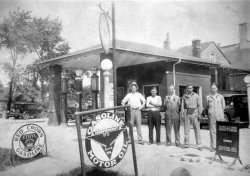
- Pacific Express: 1964
- ... departs Corry, Pennsylvania westbound. It will arrive in Chicago in about 13 more hours, having stopped at every station on the route. ... a year the train will be discontinued, but Hoboken to Chicago service will continue with two other trains in each direction - Phoebe ... Posted by Tim Sullivan - 06/03/2016 - 7:43pm -
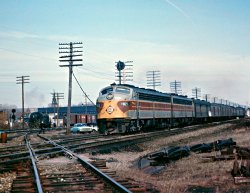
- Produce Exchange: 1904
- ... by one year the earliest example of skeleton framing in Chicago, the Home Insurance Building of 1884-1885. Because this newfangled ... Posted by Dave - 08/22/2014 - 11:07am -
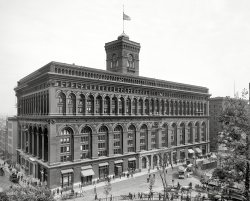
- Charlton Street: 1941
- ... in the way that older neighborhoods in Detroit, Gary, and Chicago are. In those cities, you see tons of vacant lots where houses ought ... Posted by Dave - 11/23/2018 - 3:36pm -
![Charlton Street: 1941 April 1941. "Row of houses on East Charlton Street, Savannah, Georgia." Acetate negative by Jack Delano for the Farm Security Administration. View full size.
Still looking good
Curb AppealAll I can say is WOW!
A truly beautiful revival. That Google Street View provides a powerful argument for renovating rather than razing neighborhoods. Thanks for posting.
It had better look goodEstimated value of this address is $790,000. Beautiful property, though, and I'd bet we're not the only ones glad it was spared from the wrecking ball. One other interesting thing about this district is that it indicates that the area is not "hollowed out" in the way that older neighborhoods in Detroit, Gary, and Chicago are. In those cities, you see tons of vacant lots where houses ought to be; it would be interesting to learn that didn't happen in Savannah.
[Savannah, like Charleston and New Orleans, is rather famously well-preserved. - Dave]
(The Gallery, Jack Delano, Savannah)](https://www.shorpy.com/files/images/SHORPY-8c05217a.thumbnail.jpg)
- The Claypool: 1904
- ... the direct Pence line of the VP's family were based in Chicago, and earlier Iowa and Ohio. The Pence (Bentz) family traces back to at ... Posted by Dave - 07/15/2018 - 5:02pm -
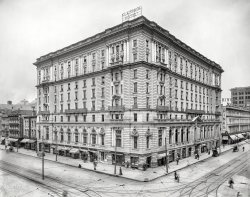
- Billy Sullivan: 1911
- Chicago White Sox catcher Billy Sullivan. May 13, 1911. View full size. ... Posted by Dave - 07/29/2012 - 7:09pm -
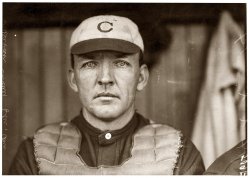
- High Wires: 1936
- April 1936. "Chicago & Milwaukee tracks. Housing alongside electric railroad. Milwaukee ... Posted by Dave - 08/15/2014 - 10:59am -
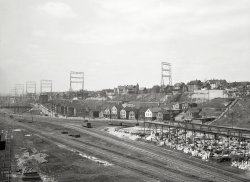
- Company B: 1920
- ... If this were colorized what color would the coats be? Chicago maroon/burnt orange possibly?
And just 3 years later, 1923, the 4 ... Posted by Dave - 02/10/2015 - 11:40am -
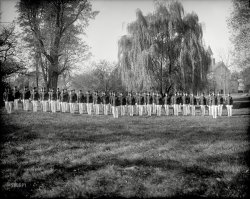
- Detroit Publishing: The Sequel
- ... as large a producer of postcards as the Curt Teich co. in Chicago?
[At its peak in the early part of the century, Detroit ... Posted by Dave - 08/13/2014 - 2:49pm -
![Detroit Publishing: The Sequel Detroit, Michigan, circa 1902. "Detroit Photographic Company, southeast view." Our second look at the home of the Photochrom-process postcard. View full size.
Ripe for colorizationWith all the false-color postcards they turned out, someone should do some retro-justice to this plate. Any takers for creating an over-obvious color job?
PostcardsWas Detroit Publishing a competitor or as large a producer of postcards as the Curt Teich co. in Chicago?
[At its peak in the early part of the century, Detroit Publishing was selling around 7 million postcards and prints a year. - Dave]
(The Gallery, Detroit Photos, DPC)](https://www.shorpy.com/files/images/4a20860a.thumbnail.jpg)
- Halloween: 1955
- ... trouble.
This photo was taken in Jefferson Park in NW Chicago. My father either managed or was assistant manager at a Kresge Dime ... Posted by HankHardisty - 05/07/2010 - 7:21am -
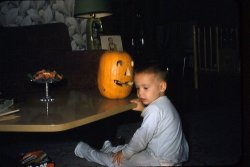
- The Lyceum: 1904
- ... a performance of "Anna Christie" at the Cort Theater in Chicago.
June 1904. "Lyceum Theatre, Detroit." Onstage this week: ... Posted by Dave - 11/12/2016 - 12:03pm -
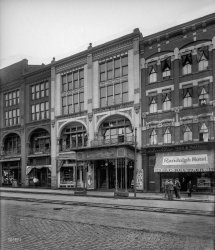
- The Old Mill: 1899
- ... depot on the Sheboygan and Fond du Lac Railroad (later the Chicago & Northwestern) line, which is out-of-sight of the mill in the main ... Posted by Dave - 05/25/2017 - 11:25am -
